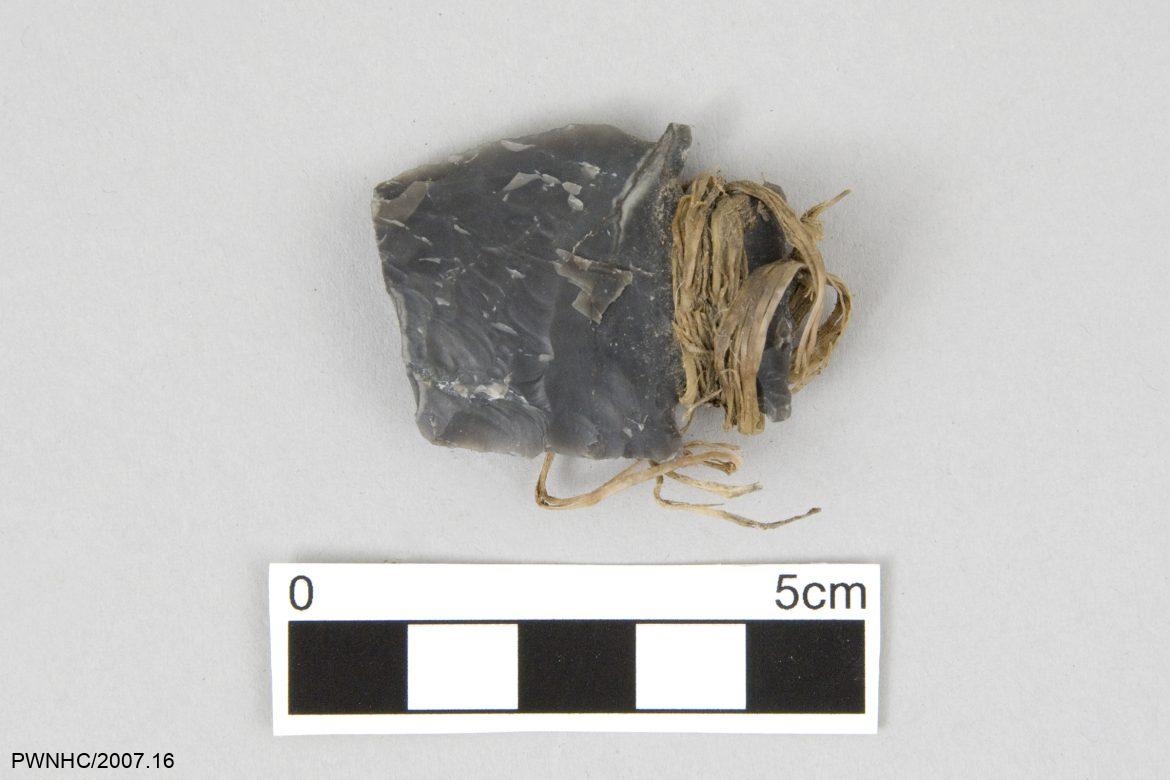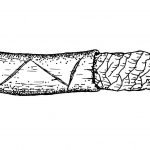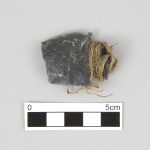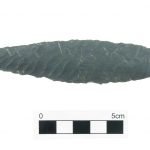2400 Years Ago
Throwing Dart
Starting in 2005, archeologists from the Prince of Wales Northern Heritage Centre worked with Shúhtagot’ine to excavate several alpine ice patches in the Sahtu region. This throwing dart is an example of one of the many hunting tools found during this archaeological dig.
Alpine ice patches form from snow falling on north-facing mountains in the winter. Ice patches are essential habitat for caribou in the summer months. Protected from the sun, the annual layers of snow do not completely melt away during the summer. They provide a place for caribou to keep cool and seek relief from swarms of biting insects. Each year the patches grow when new snow is added to the compressed layers of ice and caribou dung. Some ice patches in the Selwyn Mountains of the Northwest Territories have existed for over 5,000 years.
The Shúhtagot’ine (‘people of the mountains’), now primarily settled in Tulita, have lived and hunted in the alpine area straddling the Mackenzie and Selwyn Mountains for thousands of years. Hunters using the patches left behind evidence of their activity. Frozen in ice, even the most fragile artifacts are preserved, including wood arrow shafts, sinew binding, feathers to use to fletch arrows, a 1,000 year-old snare and throwing dart segments.
Throwing dart technology is ancient and was used by hunter-gatherer societies worldwide. his specimen included a foreshaft made from the wood of saskatoon berry cane found with its stone projectile point and a fragment of the birch shaft. The local Dene told the archaeologist that there are Dene stories of Yamǫ́rıa collecting saskatoon berry for arrow shafts, linking this ancient archaeological find directly to oral tradition.







